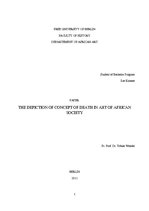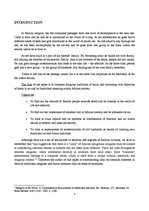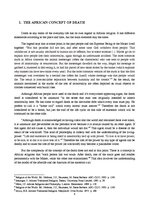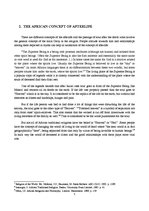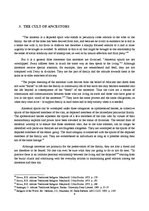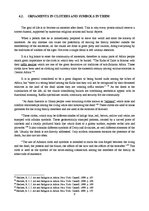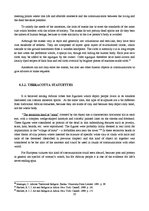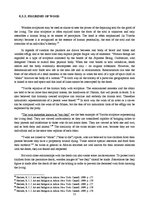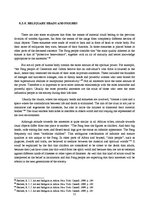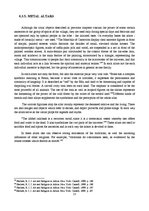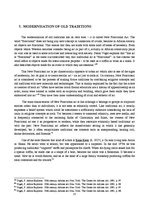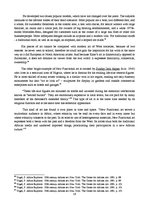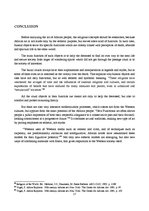-
The Depiction of Concept of Death in Art of African Society
Free!
| Nr. | Chapter | Page. |
| INTRODUCTION | 3 | |
| THE AFRICAN CONCEPT OF DEATH | 4 | |
| THE AFRICAN CONCEPT OF AFTERLIFE | 5 | |
| THE CULT OF ANCESTORS | 6 | |
| BURIAL AND MOURNING CUSTOMS | 7 | |
| FUNERAL RITE | 7 | |
| ORNAMENTS IN CLOTHES AND SYMBOLS IN THEM | 8 | |
| RITUAL OBJECTS | 9 | |
| MASKS | 9 | |
| TERRACOTTA STATUETTES | 10 | |
| FIGURINES OF WOOD | 11 | |
| RELIQUARY HEADS AND FIGURES | 12 | |
| METAL ALTARS | 13 | |
| INDIVIDUAL AND COMMUNITY | 15 | |
| MODERNISATION OF OLD TRADITIONS | 16 | |
| CONCLUSION | 18 | |
| BIBLIOGRAPHY | 19 |
Death as any realm of the everyday life has its own legend in African religion. It has different statements according to the place and time, but the main elements stay the same.
The legend says that at some point in the past people and the Supreme Being or the Maker lived together. “But this paradise did not last, and after some time God withdrew from people. This withdrawal is not usually attributed to human sin or offence, but to some mistake (..). Myths go on to explain how people lost their immortality, again through an unfortunate accident. The most common myth in Africa concerns the animal messenger (often the chameleon) who was sent to people with news of immortality or resurrection. But the messenger dawdled on the way, forgot his message or garbled it, stuttered in delivering it, or had his parcel of new skins stolen by the snake (which explains why snakes can have new skins every year). But the most common version of the myth is that the first messenger was overtaken by a second one (often the lizard) whose message was that people would die. The result is irreconcilable separation between humanity and the creator.”1 As the result, the animals mentioned in the myths of the lost of immortality are often depicted on ritual objects or cloches connected with burial rites.
Although African people have used to the death and it’s everywhere appearing signs; the death itself is considered to be unnatural “in the sense that man was originally intended to inherit immortality here. He has come to regard death as the inevitable debt which every man must pay. He prefers to call it a “home call” which every mortal must answer.”2 Therefore the death is not considered to be a threat, but just the end of the life cycle on this side of existence which will be continued on the other side.
“Although death is acknowledged as having come into the world and remained there ever since, it is unnatural and preventable on the personal level because it is always caused by an other agent. If that agent did not cause it, then the individual would not die.”3 This agent could be a disease or the result of the witchcraft.…
In African religion, the life comprises passages from one level of development to the next one. Child is born and by that he is introduced to the world of living. At his adolescence he goes throw different kinds of tests and gets introduced in the world of adults, etc. At individual’s way through the life, he has been accompanied by the society and he goes from one group to the other within the society where he is born in. At the birth child is a part of his parents’ family. By becoming adult he builds his own family, still staying the member of his parents’ family. And at the moment of the death, person did not vanish. He just goes through transformation that leads to the next life – the afterlife. At the same time, person gets into a new group – in the group of ancestors, still staying one of his own family members. Death is just one of the passage rituals, but it is the same way important as for deceased, as for the whole society. The Aim of the paper is to compare religious traditions of burial and mourning with depiction of death in art and its functional meaning within African society.

